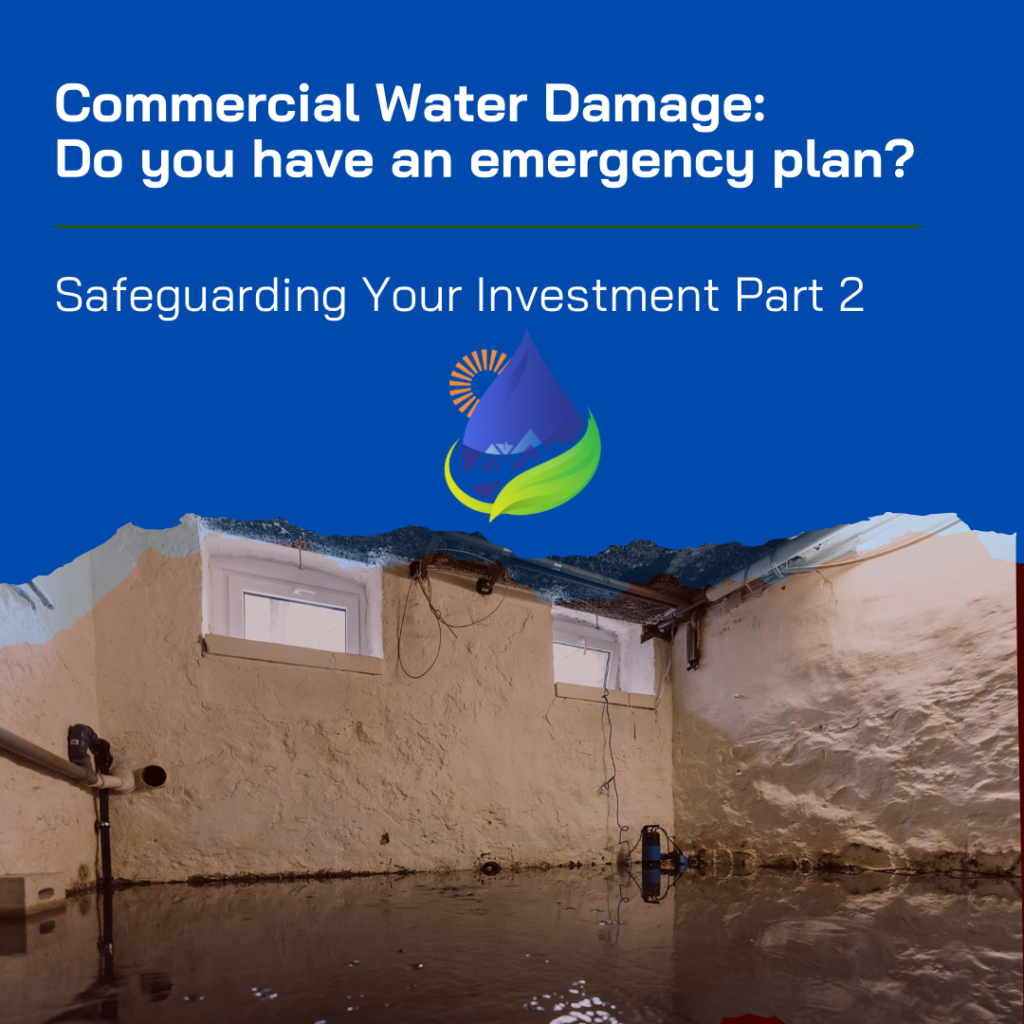- Identify the Source of Water Damage
Sudden and accidental damage such as a burst pipe, accidental overflow, appliance, malfunction, etc. Gradual damage that occurs over time due to poor maintenance or slow leaks are not often covered because they are considered preventable through regular maintenance.
- Mitigate Further Damage
Take immediate action to prevent additional damage; most home insurance policies have a clause “requiring homeowners to mitigate damages.” FEMA gives more details in this article. Examples are:
- Turn off the water supply if it’s a plumbing issue.
- Dry the affected areas as much as possible
- Remove any valuable or sensitive items from the affected area.
- Use fans or dehumidifiers to dry the space.
- Review Your Home Insurance Policy
Not all water damage is covered by every home insurance policy. It’s critical to understand your policy’s exclusions. Common exclusions are:
- Flooding caused by natural disasters.
- Water damage from sewer backups.
- Long-term leaks and mold from gradual damage.
- Document the Damage
Proper documentation is key to a successful insurance claim- be thorough in capturing the extent of the water damage. Take the following steps:
- Photograph & video all affected areas, including ceilings, walls, floors and personal belongings.
- Create a detailed inventory of damaged items, including their value/age/purchase receipts
- Keep all receipts for emergency mitigation costs like temporary repairs, fans, or dehumidifiers.
- Contact Your Insurance Company and Meet with the Adjuster
Provide the insurance company with the details about the damage, the cause, and steps you’ve taken to prevent further damage. The faster the claim- the quicker the repair process! After filing your claim, the company will send an adjuster to assess the damage. The adjuster will: inspect affected areas, review documentation, evaluate the cost of repairs and replacements. Point out all areas of damage so that the adjuster does not miss anything.
Pro tip: have your own contractor provide an estimate before the adjuster’s visit to ensure fair compensation.
- Negotiate and Understand your Payout
The insurance company will provide a settlement offer. The payout may not always cover all your damages, so you might need to negotiate. Review the adjuster’s report carefully and discuss discrepancies or disagreements with your insurance company.
- Hire Rapid Remediation to Make Repairs
Note: some policies may pay the contractor directly, while others may reimburse you after the repairs are complete.
Be sure to hire licensed and insured contractors. At Rapid Remediation, our technicians are IICRC certified and participate in continuing education to stay abreast of any new industry standards and procedures. We are licensed, insured and a 24-HOUR EMERGENCY SERVICE. Contact us 24/7 at: 832-349-8054.




